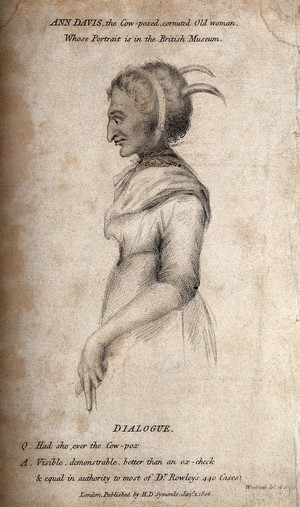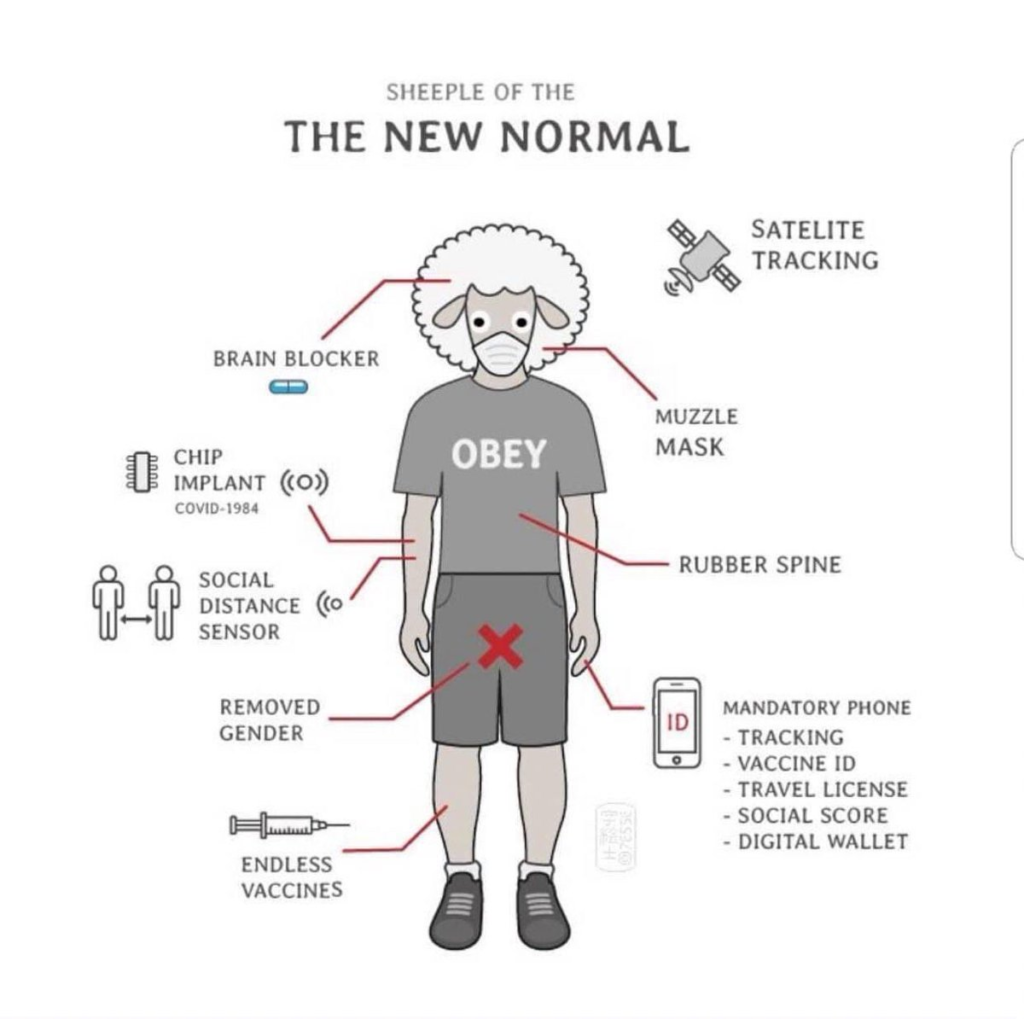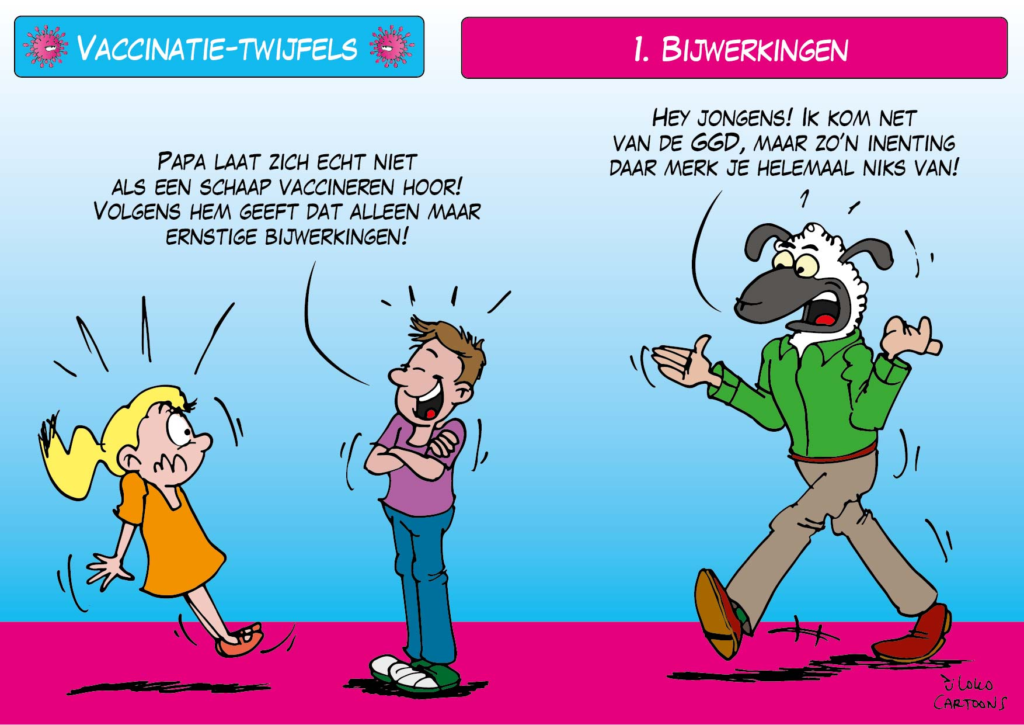You have probably seen it plenty of times on social media: the vaccination debate. After two years of COVID and more than half a year after the first COVID-vaccine came out, the discussion is all too familiar and still so topical. Especially the smaller group of fanatical anti-vaxxers are clearly heard and seen on social media. They use a lot of visuals like pictures and memes, among other things, to get their point across. But this movement and its use of visuals are not new and do not stand alone. In fact, it stems from a long history and rich iconography. To put this movement and its iconography into context, I will extract a historical anti-vaxxers cartoon and compare it with other cartoons, prints and memes over the years.
Smallpox vaccine and the rise of the anti-vaxxers:
In 1796 the British doctor Edward Jenner invented the smallpox vaccine; the first vaccine ever made. He had previously observed that milkmaids became less ill and died less often from smallpox, which he suspected was due to their frequent exposure to cowpox. To test his theory, he conducted an experiment in which he infected children, through a cut in the arm, with dead cowpox particles. His experiment proved successful and thus the first vaccine was created. In appreciation of his work and to support his further work, he was awarded 10,000 pounds by the British government. However, not everyone was so appreciative and protest movements soon arose with strong objections to this vaccine. The iconography of this protest movement gives us a good idea of the objections that arose at that time and the differences and similarities with the objections that exist among anti-vaxxers today. As a starting point, we take an anti-vaccination cartoon by Charles Williams from 1802.
If you want to learn more about the origins of the anti-vaxx movements I would suggest listening to the podcast ‘The Conversationalist’ about the ’19th century Origins of the Anti-Vaccination Movement’:
https://soundcloud.com/conscicom/the-conversationalist-06-the-c19th-anti-vax-movement
The cartoon
The cartoon, made by active cartoonist and anti-vaxxer Charles Williams, is quite shocking and hectic. It might not immediately be clear what is depicted, so let’s break it down. In the middle of the print, we see a large cow-like monster which symbolizes the vaccine. The monster himself is sick and carries all kinds of diseases, as it is written on his body. To the left of the monster are the vaccine advocates, all decked out with horns and tails. These proponents, one of whom seems to refer to the figure of Jenner, feed babies to the vaccine-monster. In the back right, a group of anti-vaxxers come to protect the babies and fight the vaccination. Reference is made here to British anti-vaxxers of the time: Robert Squirrell, George Lipscomb, William Rowley, John Birch and Benjamin Mosley. Their names are written on the obelisk and their initials are incorporated on the shields. So far, pretty straightforward and easy to follow, right? So, let’s dive deeper. Which arguments against vaccines are reflected here and how are they visualised? And how are these arguments and their iconography linked to today’s anti-vaxxers movements?
Beastly: the cow and the sheeple
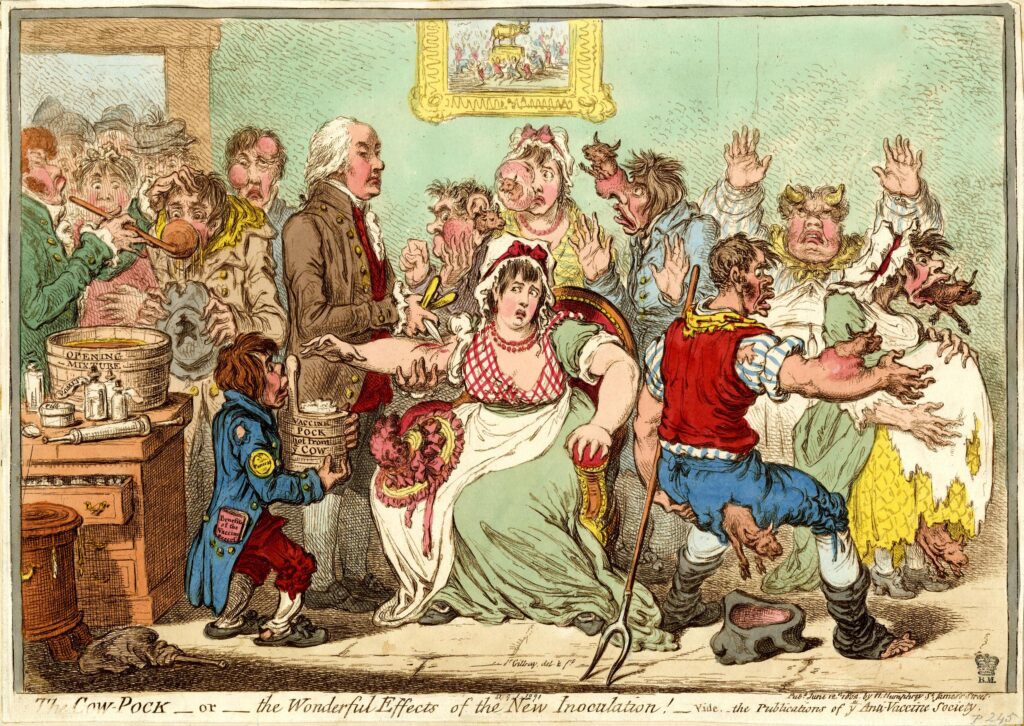
The first clear argument that is depicted in a lot of cartoons is the idea that vaccination is unnatural, inhuman and even beastly. The idea of injecting anything unfamiliar or inhuman into the body, ignites fear with a lot of people. In the 1800’s the fear of injecting beastly (dead cowpox) particles into the body, was often portrayed in the cartoons by turning the vaccinated people into animals. Charles Williams made this link very clear in his cartoon by giving the proponents of vaccination horns and tails. If you look closely, you can also see that the babies that come out of the vaccination-beast have horns and tails as well (image 1). Another fine example of this is James Gillray’s cartoon from the same era, which depicts and ridicules the anti-vaxxer’s fear of humans turning into beasts (image 2). In his print, cows suddenly crawl out of the bodies of people who have just been vaccinated by Jenner. Two other clear examples are the engravings of Thomas Woolnoth, in which he shows the ‘effects of vaccination’ being that vaccinated humans turn into animals (image 3 and 4). This same rhetoric and iconography is still used today in the fight against vaccines. Anti-vaxxer nowadays are using the same argument and are afraid that the COVID-vaccine would alter their DNA. The iconography of the ‘sheeple’ is a prime example of how the same iconography of the human turning into a beast is still used today (image 5 and 6).
Conspiracy: money, pharmaceutics and the great reset
Another often-heard suspicion of the anti-vaxxers group is the idea that the people who invent, sell or impose the vaccine (financially) benefit from it. Williams seems to suggest this by painting a 10.000 pound check in Jenner’s back pocket, who is feeding children to the vaccine-monster (image 1). The same rhetoric is used a little later in the year 1885 on a poster that shows a baby being vaccinated by ‘death’ (image 7). The text states ‘Vaccinate! Vaccinate! Vaccinate! There’s money in it!!! Twenty thousand victims will be vaccinated within the next ten days …That will put 10.000 into the pockets of the Medical Proffesion.’ This suspicion is also strongly reflected in the arguments of anti-vaxxers today. The pharmaceutical industry and governments are often suspected of taking personal gain from vaccinations and not doing so for public health. Image 8 shows that the same iconography and language are still being used today.
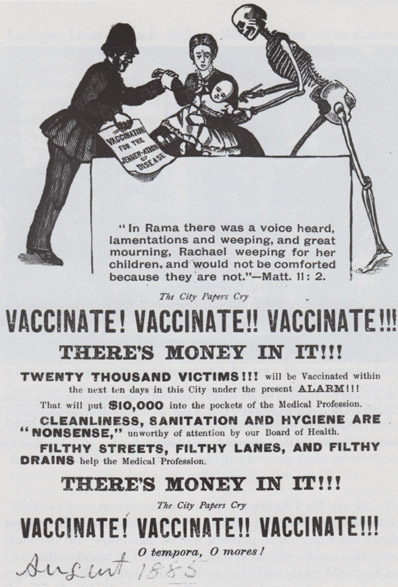
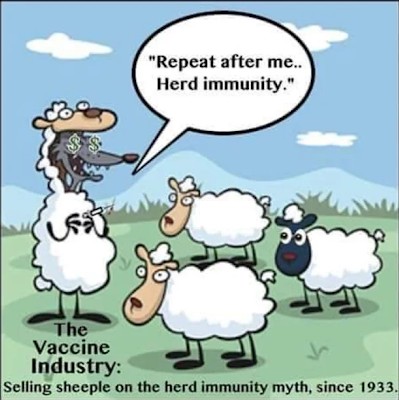
Recycle and reuse
We have seen that the anti-vaxx movement has used some of the same arguments, rhetoric and iconography throughout its history. Especially the arguments and visuals about vaccinated people turning into beasts and the conspiracy about medical organisations making vaccines only for money are often recycled and reused. Interestingly enough, even the exact cartoon by Charles Williams is still being used and recycled today by anti-vaxx movements. The cartoon has, among others, been used by anti-vaccination website ‘Whale’. The website ‘appreciate(s) the reality of this cartoon’ and adds its own layer on top. They added text and explanation over the original cartoon, using claims from scientists that in their eyes prove the reality of the cartoon from Williams.
Seeing all these uses and reuses of visuals throughout the history of the anti-vaxx movement is very interesting and makes one even more curious. Are there more historical cartoons about anti-vaccination? What about other arguments, for instance religious ones, and their iconography? Luckily I’m not the only one interested in and writing about this. If you want to dig deeper into this topic, here are some nice blogs you could read:
